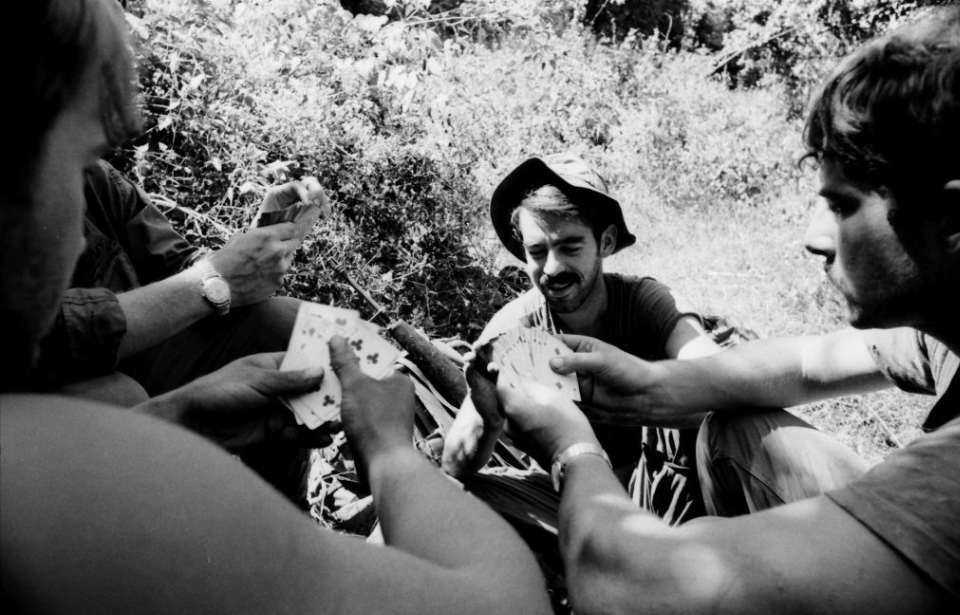Symbols during wartime are important and, more than that, they are powerful. Winston Churchill famously used the “V for Victory” symbol during World War II, which was adopted by the United Kingdom as a way to stick it to their enemies. Likewise, Uncle Sam became a powerful symbol for US military enlistment.
The ace of spades became one of these very symbols when it was used by US troops during the Vietnam War. Although the symbol was popularized during the conflict, it wasn’t the first time card suits were used in wartime with a bigger meaning behind them.
The Screaming Eagles and D-Day
The first time the ace of spades took on a larger symbolic meaning was during the Second World War. Prior to that, it had only been used as part of the British Army’s regimental insignia during World War I.
In the lead up to the D-Day landings, the 101st Airborne Division adopted the use of card suits, as well as other shapes, to identify their different regiments. These symbols were used to help identify troops who had been separated from their units after gliding or parachuting into Normandy, and were painted on the sides of their helmets, rather than a physical playing card stuck to the headgear.
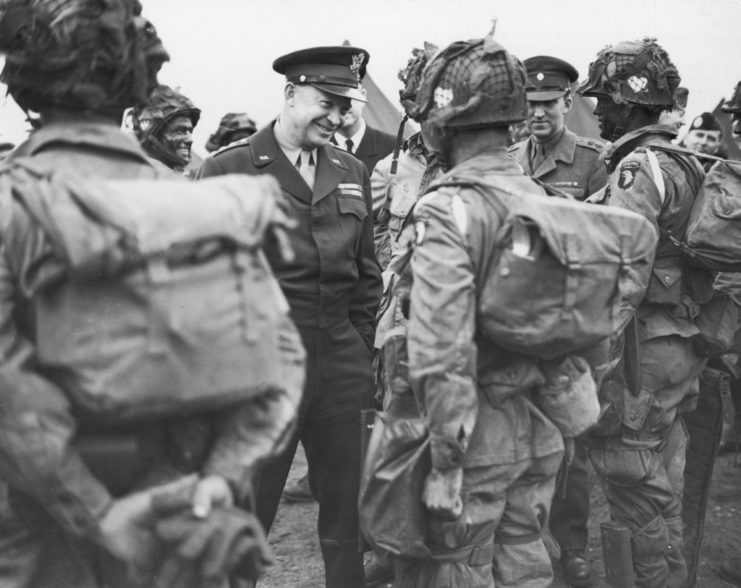
Four of the “Screaming Eagle” units were given a card suit for their helmet symbol. Hearts were used for the 502nd Infantry Regiment, diamonds for the 501st and clubs for the 327th Glider Infantry. The 506th Parachute Infantry Regiment were given spades and, for them, the suit became a symbol of good luck.
Today, the cards are still used to commemorate the 101st Airborne’s legacy and success during the Second World War.
The death card
The ace of spades was used during the Second World War as a symbol of luck, but it took on a completely different meaning during the Vietnam War. US troops used the card during the war, as they believed it was a source of superstition for Viet Cong soldiers. They often carried them tucked in their helmets as a symbolic way of showing that where they went, so, too, did death.
This myth that the Viet Cong were scared of the ace of spades stemmed from when the French occupied the region. When they told fortunes with a deck of cards, the suit predicted death and ill-fortune. Because of this, US forces would leave the ace of spades on the bodies of the North Vietnamese they killed, to try and frighten other Viet Cong soldiers.
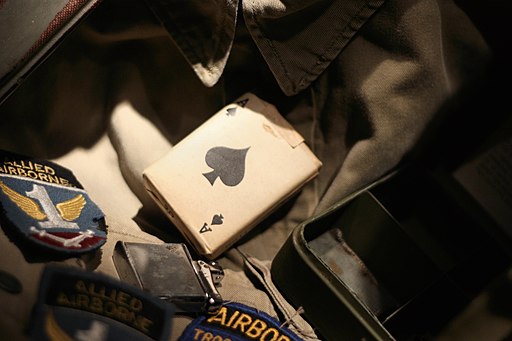
Some troops would leave the ace of spades over those they killed, making it the last thing they saw. Although the cards weren’t actually a symbol of fear for the Viet Cong like some believed, they did become a powerful symbol for those who used them. Having an image like the ace of spades boosted morale amongst the Americans.
An American secret weapon
The Americans believed the ace of spades was so important that there were special decks of cards created just for the soldiers in Vietnam. Two lieutenants from Charlie Company, 2nd Battalion, 35th Infantry Regiment contacted the United States Playing Card Company, asking if they could supply decks that only included the ace of spades.
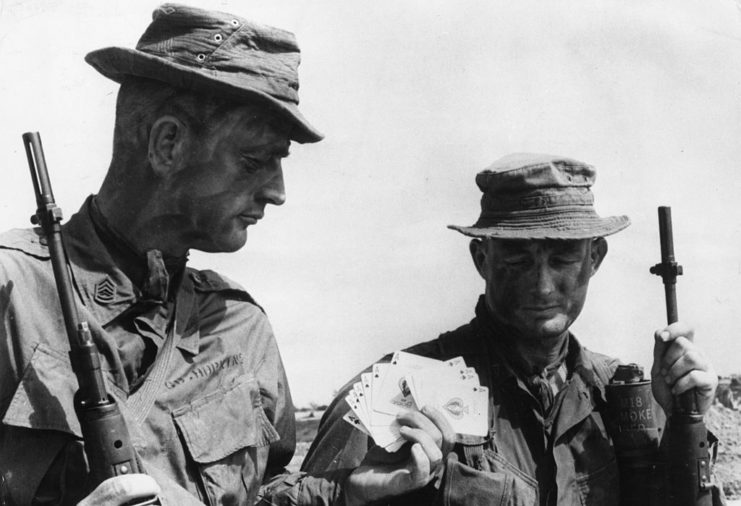
The company obliged and sent thousands of these special decks, for free, to soldiers in Vietnam. Their cases were labeled with the Bicycle brand, followed by “Secret Weapon.” US troops would take these cards and scatter them during jungle raids or in villages, to further intimidate their enemies. It was also said that some men wore them in their helmets as an anti-peace sign.
Other cards in war
The Screaming Eagles and the soldiers in Vietnam are undoubtedly the most famous instances of playing cards and suits being used during war, but other instances have occurred. During American operations in Iraq, the US Defense Intelligence Agency created a special set of playing cards to help American forces identify the 52 most wanted Iraqis.
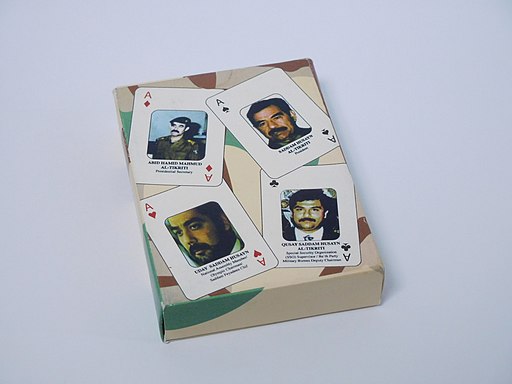
More from us: MoH Recipient William H. Pitsenbarger Gave His Life Trying to Rescue His Injured Comrades
Each card showed an image in the middle, where available, and included the individual’s address and job title. Saddam Hussein, the individual most wanted by the US, was placed on the “Death Card.”
